The Memphis Flyer podcast is back after a little New Year’s hiatus. In this episode, Chris McCoy and Alex Greene talk about the legacy of Sam Moore, and the season 2 premiere of Severance.
Memphis Flyer Podcast Jan 23: So Long, Sam
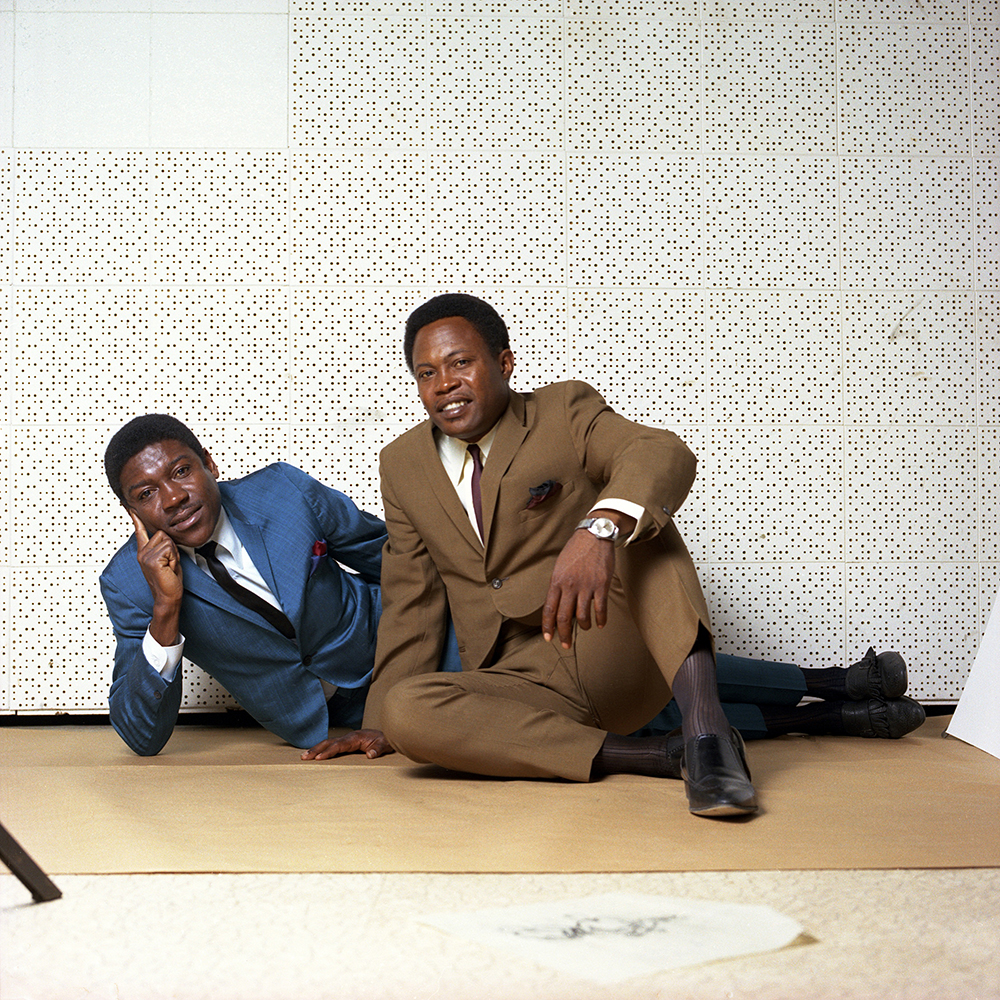

The Memphis Flyer podcast is back after a little New Year’s hiatus. In this episode, Chris McCoy and Alex Greene talk about the legacy of Sam Moore, and the season 2 premiere of Severance.
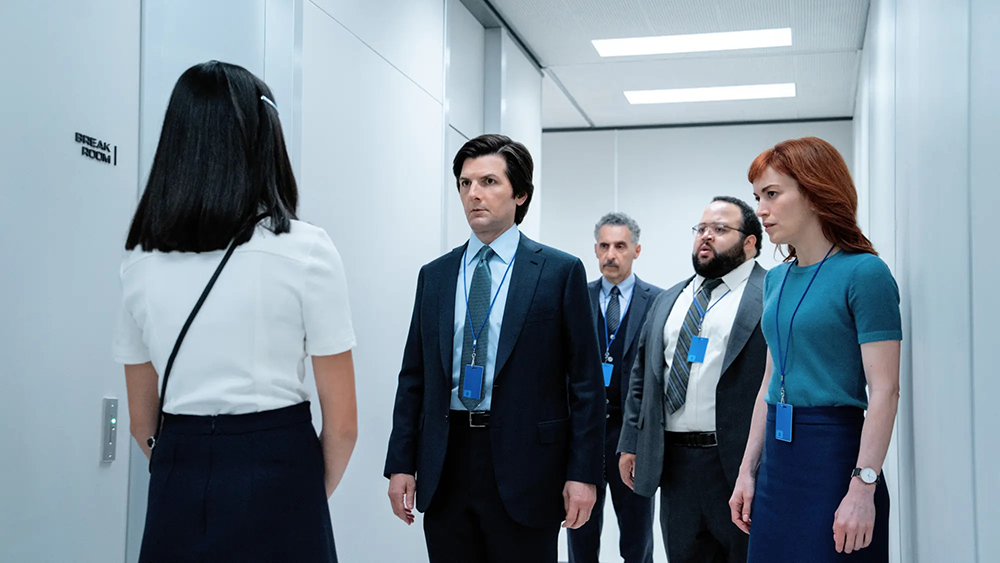
Do you ever feel like a different person at work? Everyone has a work persona they put on, especially if you deal with the general public. For some people, the difference between their work self and private self is vast.
Severance, which just debuted its second season on Apple TV+, takes this observation to extremes. What if, instead of just watching your language and putting on a fake smile for work, you became an entirely different person? That’s what happens to Mark (Adam Scott) every time he steps into the elevator at Lumon Industries. He’s an “Innie,” someone who has had a chip implanted into his brain which creates a kind of split personality. When he’s in the office, he’s a macrodata refinement specialist, and not even he knows what that means. The work he and his co-workers perform just looks like staring into a computer screen and dragging random numbers and letters into a box. He doesn’t even know what criteria he’s applying.
When he’s not at work, Mark is a depressed mess, a widower whose pain is so acute he chose to spend a third of his life with his mind wiped. He has no idea what goes on in the basement of Lumon Industries, and, at least at first, he doesn’t care.
In season 1 of Severance, Innie Mark went from the model Lumon employee to being suspicious of his employer. And there’s much to be suspicious of. The Innies are indoctrinated into a weird cult of personality around late Lumon founder Kier Eagan (Marc Geller). When onboarding his newest co-worker Helly (Britt Lower) goes wrong, Mark takes the blame and gets a taste of the “benevolent” company’s discipline practice. At first, Mark’s suspicions fall on deaf ears, as Irving (John Turturro), a stickler for the rules, will hear no dissent. Eventually, Mark wants to know what his Outie is like, and, with the help of a secret group of formerly severed people, devises a plan that allows him to “wake up” outside. While there, he discovers a picture of himself with his wife and realizes that she is not dead. His Innie knows her as the company’s wellness specialist, Ms. Casey (Dichen Lachman).
Season 1 ended with a big bang, as Innie Mark and Innie Helly disrupted a company event to reveal that Lumon is torturing the Innies. It was hard to imagine where showrunner Dan Erickson and executive producer Ben Stiller could go after that. It seems that they weren’t so sure either, so season 2 comes three years after season 1. Granted, they were interrupted by the WGA/SAG strikes, but the long-cooking first episode of the new season is promising. It takes place entirely within the confines of Lumon’s stark white, retro-futuristic offices. Innie Mark is back, and this time, it seems, he’s a willing subject. But he’s got a secret agenda — to find Ms. Casey, who has disappeared from her wellness center, and reconnect with the wife he thought he had lost.
Severance’s metaphorical depiction of the alienation of labor in late-stage capitalism has struck a nerve. It’s not heavy-handed because it follows the rules suggested by the premise and expands on them to reveal more pieces of the bigger puzzle. The parade of heavy-hitting acting talent, including Patricia Arquette and Christopher Walken, doesn’t hurt either. Ultimately, the mystery boxes (why is Mark’s wife alive? What does Lumon Industries even do, anyway?) driving the plot are not the point. It’s the atmosphere of impersonal despair with a happy face plastered on top that makes Severance compelling television.
Severance is streaming on Apple TV+.

Public transportation is a big issue in Memphis. As Flyer writer Kailyn Johnson has reported, MATA is in deep disarray. Maybe it’s time to hand things over to the real professionals. Maybe it’s time to call in GloRilla.
And why not? GloRilla has a track record of success. Her debut long player Glorious peaked at #5 on the Billboard Hot 100. Her tour with Megan Thee Stallion was the hottest thing in stadiums not involving Taylor Swift. This weekend, she’ll make her national television debut as the musical guest on “Saturday Night Live.” She’s unstoppable.
As we see in her latest music video, “Hollon,” Glo knows how to do mass transit right. Directed by Troy Roscoe, the video shows our hero in the driver’s seat where she belongs. If riders are at first turned off by her cannabis-forward commute, they come around by the time they reach their destination, which we can only assume is Party Central. Get on the bus.
If you would like to see your music video featured on Music Video Monday, email cmccoy@memphisflyer.com
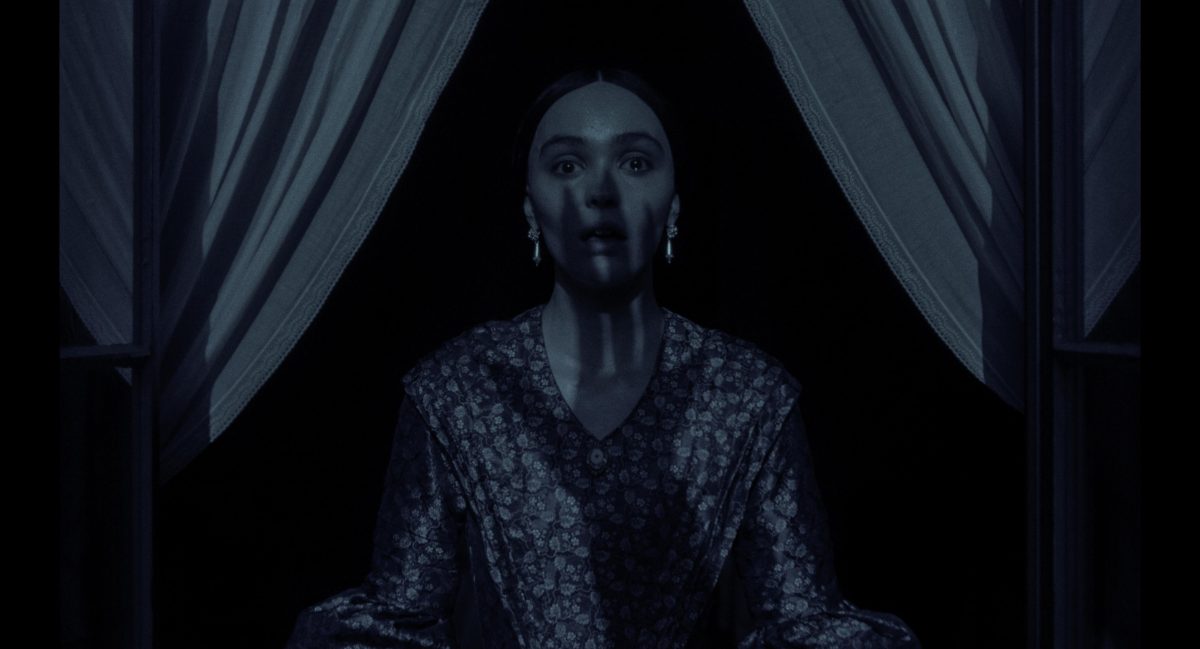
The thing Robert Eggers does better than any other director is fully inhabiting the historic worlds of his films. His characters are not 21st-century humans wearing horned helmets plopped into a longboat. In The Northman, the pagan Vikings blame the Christians for a series of gruesome murders because “their god is a corpse nailed to a tree.” In his first film, The Witch, the devil stalking his Puritan settlers is real because it’s real to them — even as Eggers hints that the actual reason bad luck has befallen their settlement is that they suck at farming.
When he approached his long-gestating passion project, a remake of Nosferatu, he gravitated towards the source material, Bram Stoker’s 1897 novel Dracula. Eggers works in the high melodrama of vaudeville theater and silent film, challenging you to throw yourself fully into the gloom.
The original Nosferatu is a haunted film. Director F.W. Murnau and star Max Schreck had both spent time in the trenches of World War I. The German producers didn’t get permission from the English estate of Bram Stoker, and when the author’s widow successfully sued, the court ordered all copies of the film destroyed. Luckily, they missed a few, and Nosferatu became one of the founding documents of modern horror. It’s also one of the few works of art to deal with the 1918 influenza pandemic, as the appearance of the vampire Count Orlok in Berlin is accompanied by a mysterious plague.
Nosferatu follows the broad outline of Dracula, but with a few important exceptions. It begins with Ellen (Lily-Rose Depp), a teenager in early 19th-century Prussia, being visited by a mysterious spirit. After it leaves, she seems to have epileptic convulsions. Years later, Ellen is a respectable young woman married to Thomas (Nicholas Hoult), a real estate agent hustling for a promotion. Thomas is assigned to visit “a very old account” in the Transylvania’s Carpathian mountains. No one knows why Count Orlok (Bill Skarsgård) wants to buy the ruined mansion down the street from Thomas and Ellen, but they’ll take his money anyway.
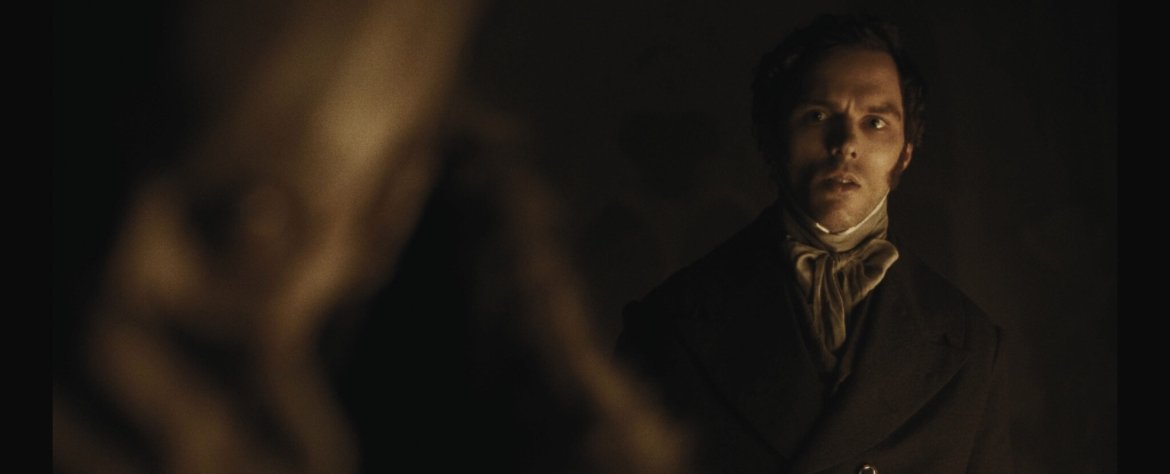
Once Thomas arrives in Transylvania, it becomes clear nothing is normal. The local Romani are on an active vampire hunt, and when they hear where Thomas is going, they rightly freak out. The count licks Thomas’ blood and makes him sign a document in a language he doesn’t understand. But even though that sounds like something a health insurance CEO would do, the mad alchemist Professor Albin Eberhart Von Franz (Willem Dafoe) rightly surmises that Count Orlok is a “nosferatu.” Once he has completed the real estate transaction and left Thomas for dead, the Count menaces an increasingly desperate Ellen, wanting to possess her body and her immortal soul.
Eggers plays all of this absolutely straight, as he has with all his movies. There is no winking to the camera. None of these characters have read Dracula, or seen What We Do in the Shadows, so every revelation of vampire lore is news to them. (The original Nosferatu, by the way, is the origin of the trope that vampires die when exposed to sunlight. Bram Stoker’s Dracula just didn’t like it.)
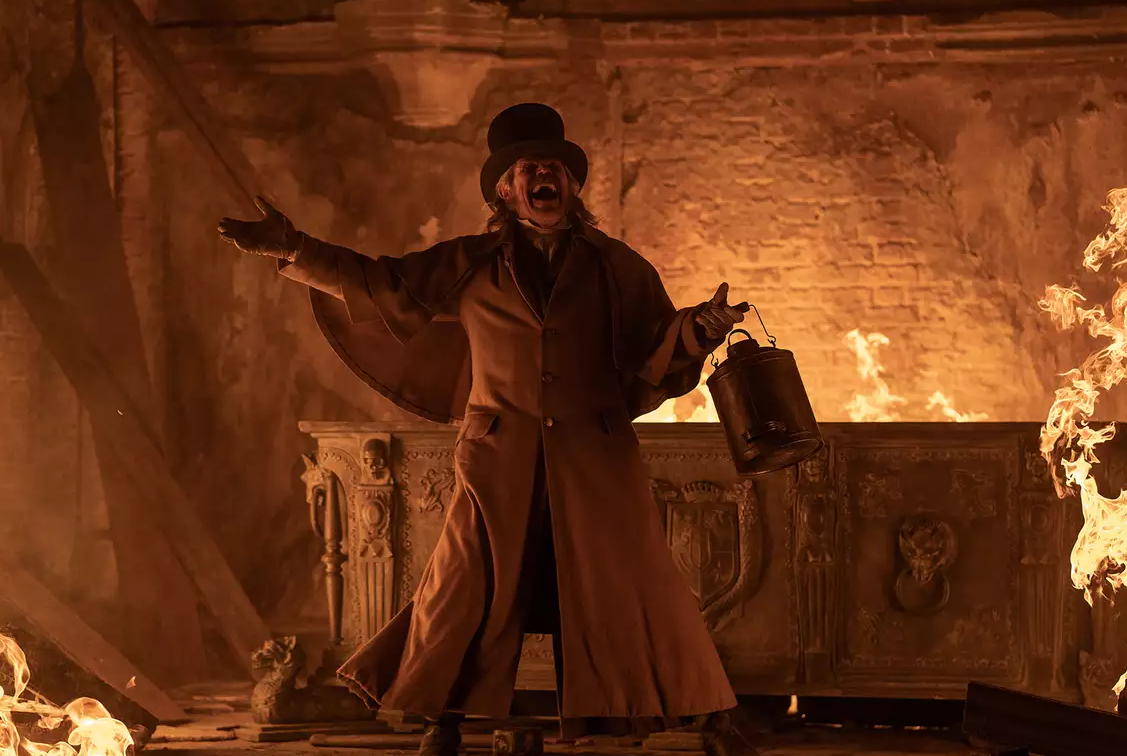
To describe Depp’s performance as “melodramatic” is a monstrous understatement. She goes full Linda Blair: shaking, foaming at the mouth, and performing a really impressive back bend while possessed with Count Orlok’s dark magic. Hoult equals her freak as the terrified husband trying to keep it together as he is faced with one mind-destroying horror after another. Dafoe pronounces every syllable like he’s driving a stake into the heart of a vampire.
The story starts out strong, but once Thomas and Orlok return to save/eat Ellen, the plot languishes in gothic ennui. Fortunately, Eggers drops one killer composition after another, so there’s always something incredible to look at onscreen. We never get the full picture of Count Orlok, who is always shaded in darkness, until the film’s extremely disturbing climax. It’s not a new observation to say that sex and death are always intertwined in horror, but few works have gone as far as Nosferatu in making the subtext so easy to read.
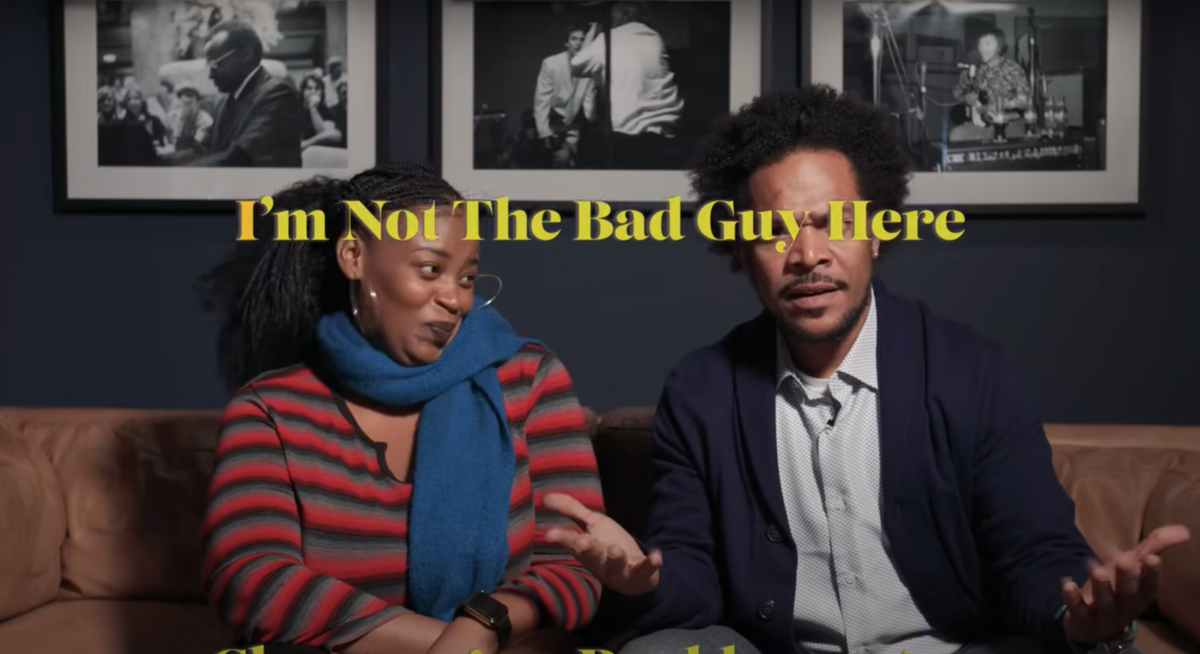
The Memphis Music Initiative (MMI) is one of the most successful arts nonprofits in Memphis. They promote music education and provide young people with opportunities to work in the music business. Last January, they released a music video that humorously addressed the frustrations of the nonprofit life. As they put it, “We’re here to serve the underserved market of fundraising jams.”
Director and producer Princeton James put together the extensive list of talent for “I Hope Like Hell We Get This Grant.” Patterned after an old cable TV ad for compilation albums by companies like K-Tel, the video brings you hits such as “Giving Tuesday” and “When I Hit The Check.” After racking up tens of thousands of views (presumably among burnt-out nonprofit staffers worldwide), the video was just nominated for a Regional Emmy Award. “We are honored to receive this nomination on behalf of the entire team, which reflects the extraordinary talent of our Memphis creatives, community partners, and staff,” says Amber Hamilton, President of the Memphis Music Initiative. “At MMI, we believe in pushing boundaries to lift the voices of grassroots organizations doing transformative work. This video is our rallying cry — cut the check and trust the experts on the ground.”
If you would like to see your music video featured on Music Video Monday, email cmccoy@memphisflyer.com.

There’s one detail that everyone who was at the 1965 Newport Festival seems to agree on: Bob Dylan wore a polka dot shirt.
Dylan’s three-song set at the annual music festival was one of those moments where an artist challenged their audience so intensely that it broke brains. In 1913, the Paris premiere of Igor Stravinsky’s The Rite of Spring caused a literal riot in the theater. Fifty years later, when Dylan takes the stage in the sleepy Rhode Island town armed with a Stratocaster and backed by Chicago electric blues disciple Mike Bloomfield, the audience which had made him a star shouts “Judas!” in this film. It is a moment that has become fraught with meaning. Depending on which side of the Great Folk Divide you fall on, it was either a rejection of the folk movement’s New Deal ideology or a declaration of artistic independence from hidebound tradition.
The Newport set is the climax of Elijah Wald’s book Dylan Goes Electric, which James Mangold has adapted into A Complete Unknown. Timothée Chalamet is the latest in a surprisingly long list of actors who have played Bob Dylan onscreen — including Bob Dylan himself.
If you want a film that uses Dylanesque artistry to explore the mythic aspects of Bob Dylan, it’s Todd Haynes’ I’m Not There. This is a music biopic by James Mangold. His Walk The Line, which was filmed in Memphis, set the standard for the genre. It was skewered so effectively by Walk Hard: The Dewy Cox Story that many people have become allergic to the basic beats that appear in every musician’s story.

Mangold and his star overcome self-parody by sheer force of execution. His actors sing all of the songs live on set, a Herculean task that is a bit easier for Chalamet, who must growl like Dylan, than it is for his co-star Monica Barbaro, who must sing like Joan Baez. The contrasting grit and glamor of the folk movement’s two greatest stars is what made their pairing palatable, and gave it a hint of danger. Baez recognizes Dylan’s talent as soon as she hears him sing in a cramped Greenwich Village basement. But she’s one of the few people who doesn’t immediately worship him, which makes her irresistible to him. The self-possessed Baez never gives an inch; when he betrays her onstage in front of a crowd of restless proto-hippies, she calmly sings on without him.
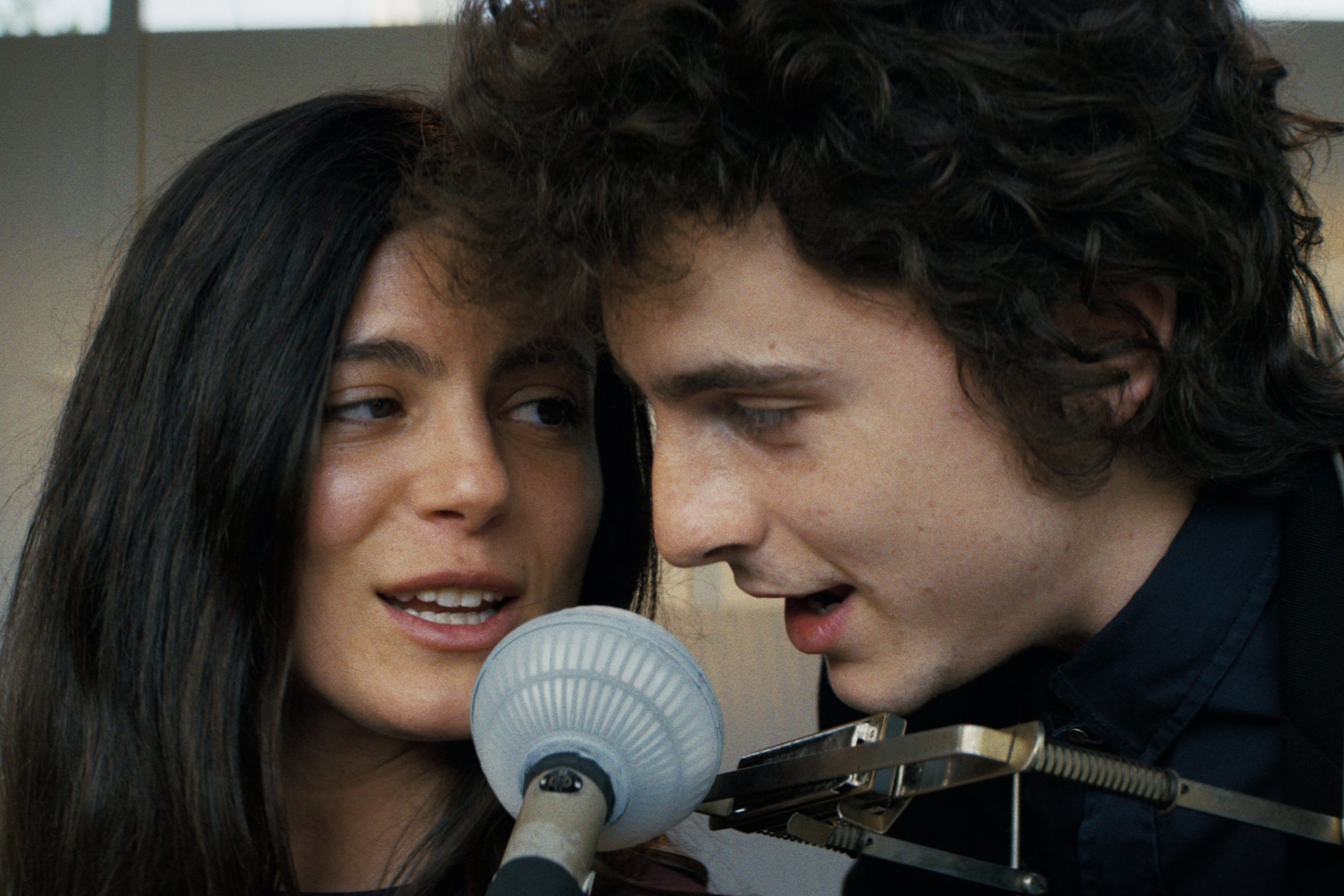
Joan didn’t need Bob, but Sylvie Russo (Elle Fanning) does. Based on the real Suze Rotolo, who appears with her then-boyfriend on the cover of The Freewheeling Bob Dylan, Sylvie is the New York sophisticate who introduces the weird boy from Minnesota to the big city. Dylan takes first the bohemian folk scene, then the cocktail party circuit by storm.
And that’s where his polka dot shirt comes in. Dylan’s appearances at the 1963 and 1964 Newport Folk Festival brought him to national attention, and his album sales took off like none of the other folkies who he emulated and idolized ever did. By 1965, he had turned the Beatles on to marijuana and was dressing like a Soho hipster instead of wearing the populist work shirt uniform favored by his mentor, Pete Seeger (Ed Norton). For the folkies, it was the first sign that their standard bearer was going to betray them.
I keep using the word “betray” in this review. Mangold and Gangs of New York writer Jay Cocks’ screenplay may not please Dylan pedants. Great as he is, Bobbie didn’t write “Masters of War” in response to the Cuban Missile Crisis, debut it in a Greenwich Village coffee shop, and bed Joan Baez all in one night. But Chalamet’s dead-on Dylan impression papers over the holes, and the film captures the essence of the time. A Complete Unknown is not a hagiography. Dylan might be a musical genius, but he’s a toxic boyfriend, and by the end of the film, both of his prime paramours know it. He is beloved by millions, but he is alone. As he rides off on the motorcycle that will almost kill him a few weeks later, he does not yet know the price he had paid for his freedom.
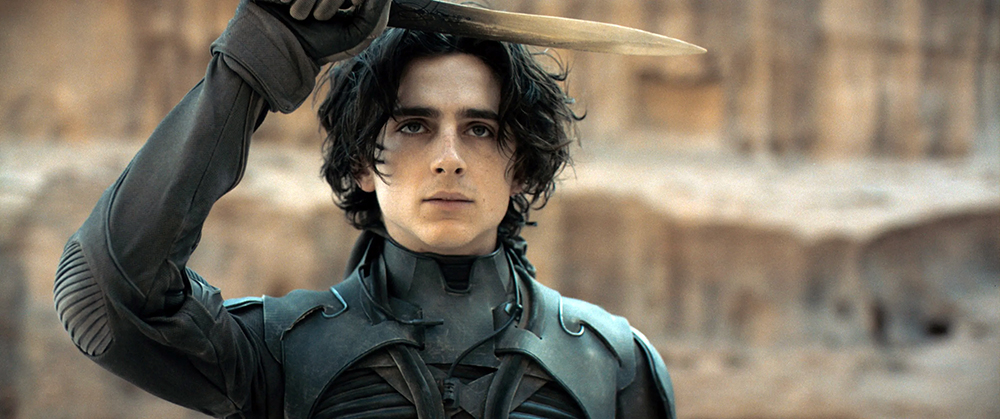
In the first year after dual writer and actor strikes rattled the Hollywood establishment, there was much fretting about lackluster box office returns in the first half, followed by much celebration in the second half. But there were gems everywhere for those who searched. We celebrate the best with Flyer Film Awards for 2024. But first, the worst.
Worst Picture
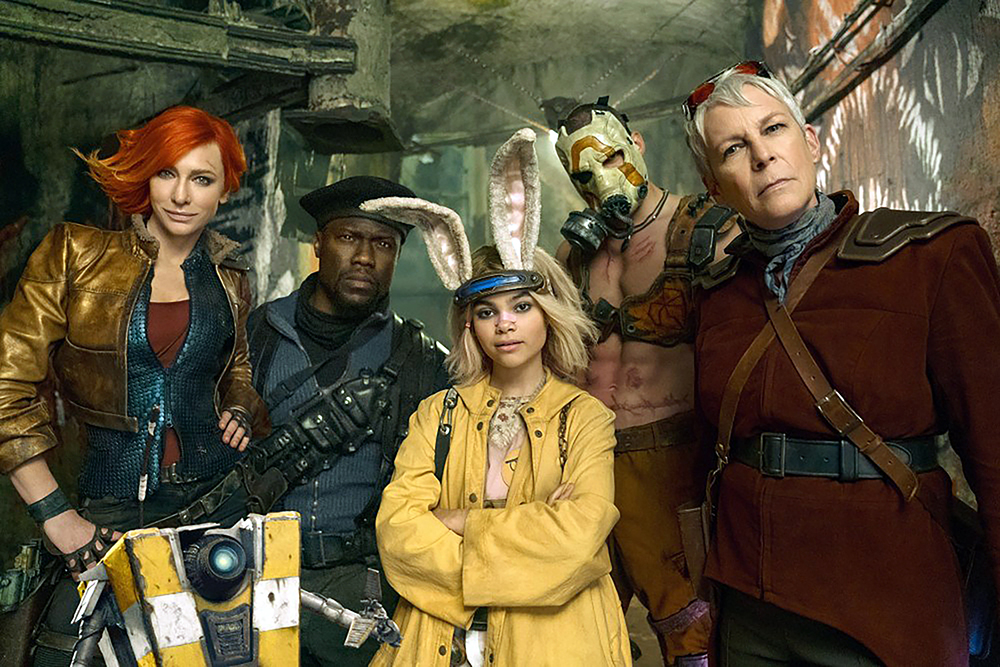
Borderlands
2024’s good video game adaptation was Amazon Prime’s Fallout series. The best thing you can say about Eli Roth’s epic flop is that everyone got paid in advance.
MVP

Timothée Chalamet, Dune: Part 2, A Complete Unknown
Muad’dib came alive as the cursed savior of Arrakis, torn between his love for Zendaya’s Chani and the imperial destiny he was bred for. Then, Chalamet sang 40 Bob Dylan songs, live on set, in A Complete Unknown and slayed every one of them. Give this boy some flowers.
Best Performance by a Nonhuman

Anxiety, Inside Out 2
Our Age of Anxiety found a mascot in the orange emotion, voiced by Maya Hawke, that invades our tween heroine Riley’s brain when she’s thrown into a competitive situation at hockey camp. I wish I had Inside Out 2 when I was growing up.
Best Interior Spaces
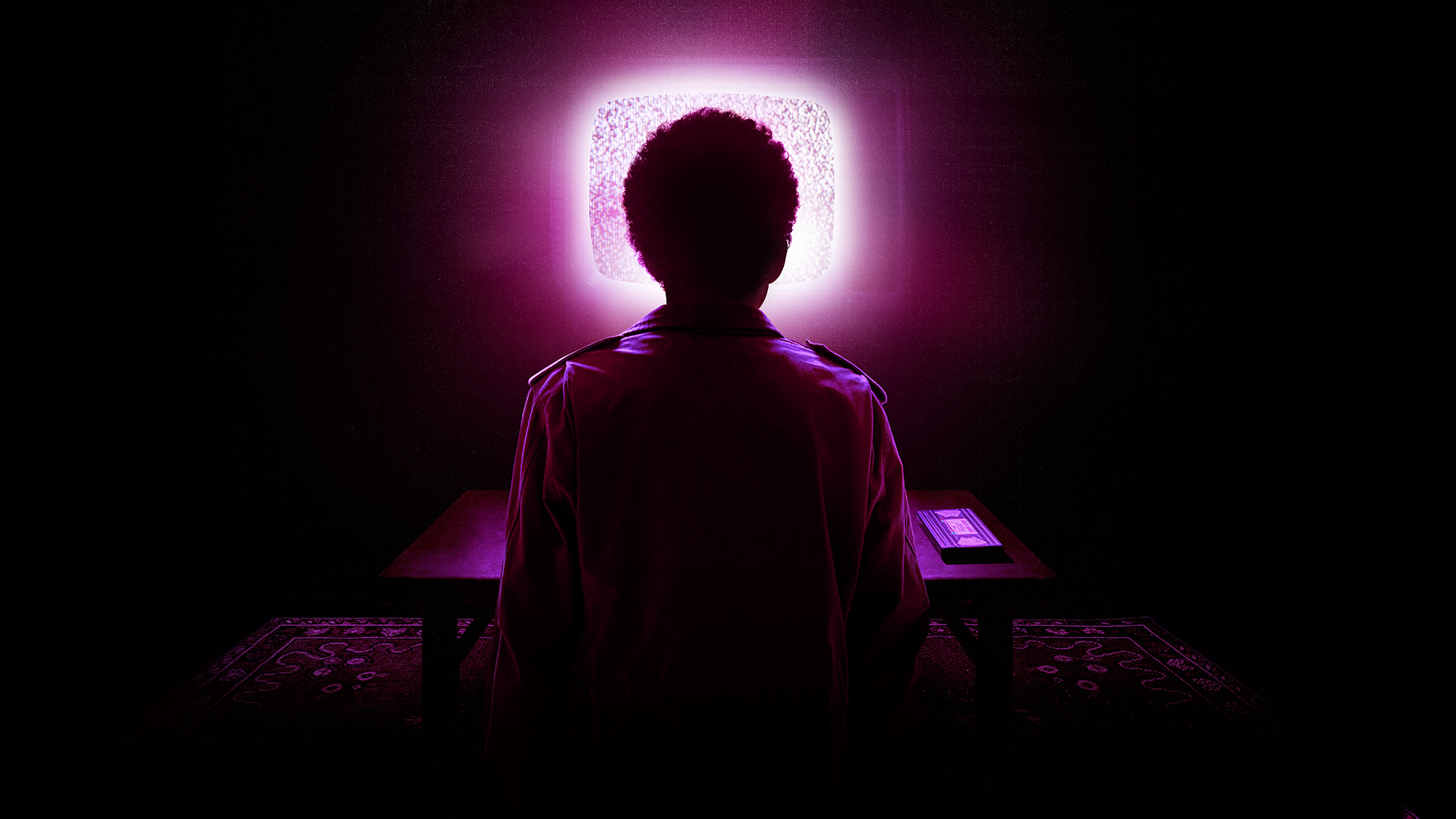
I Saw the TV Glow
Jane Schoenbrun’s ode to fandom is as inexplicable a film as you’ll see this year. Owen is a shy outsider who finds his people when he discovers a cult TV show called The Pink Opaque. He and his friend Maddy slowly lose their own identities as they tune out the rest of the world. But was it all a dream? Where does the dream end and reality begin?
Grossest Picture

The Substance
If Sunset Boulevard were directed by David Cronenberg, it would look something like The Substance. Coralie Fargeat directs Demi Moore as Elisabeth Sparkles, an aging star who will try anything to stay young, including a dangerous drug pushed by a secret organization. When Margaret Qualley bursts from her body as her younger self, she’s reluctant to get back in. Then the real body horror begins.

Best Animated Film
Boys Go to Jupiter
It was a banner year for animation, with the triumphal Inside Out 2, The Wild Robot, the plucky Latvian animal eco-fantasy Flow, and the epic Lord of the Rings: War of the Rohirrim. But this tiny team from Pittsburgh, led by Julian Glander, made a joyously subversive story of a delivery boy trying to beat the system, and the alien egg he finds along the way.
Best Cinematography

Nickel Boys
RaMell Ross’ story of two Black boys sent to a brutal reform school in 1960s Florida works its empathetic magic through first-person camera work, courtesy of cinematographer Jomo Fray. Equal parts gorgeous and brutal, but never banal.
Biggest Performance
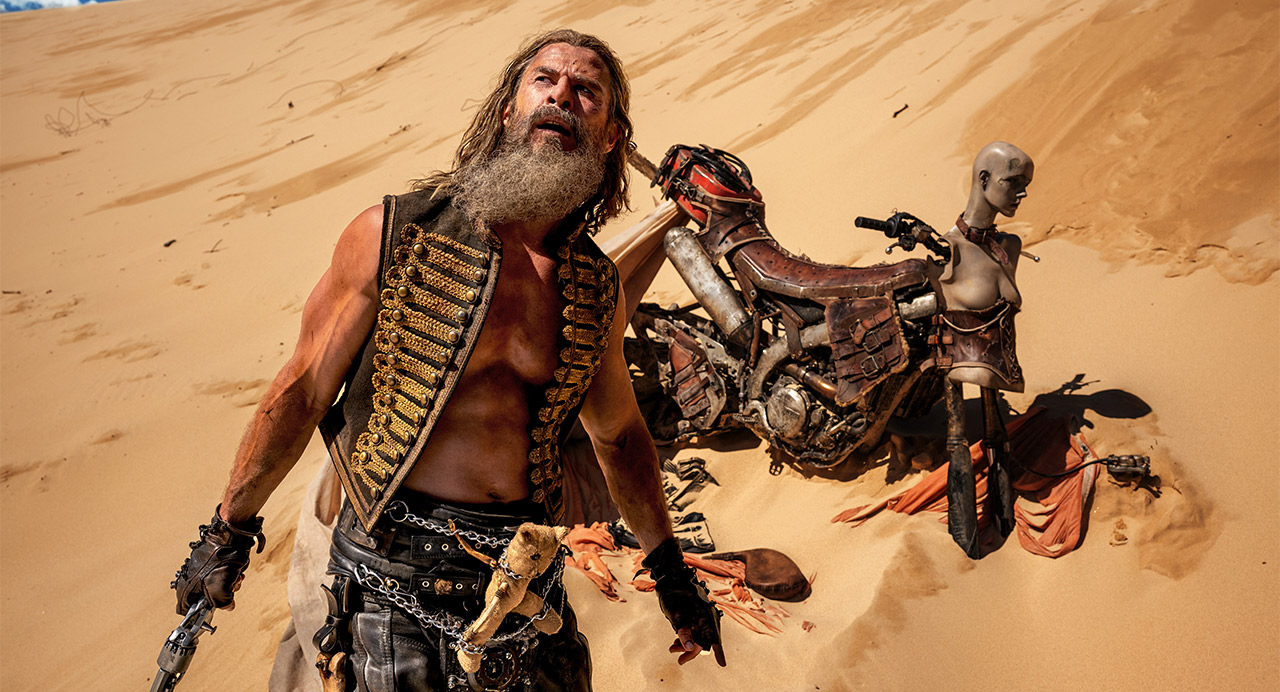
Chris Hemsworth, Furiosa: A Mad Max Saga
Director George Miller’s origin story of his Fury Road protagonist is as epic as it gets, and Hemsworth has the juice as the biker warlord Dementus. Hemsworth’s words and deeds are as big as the Wasteland’s horizon, but he leads us through decades, subtly changing Dementus’ bluster to show his loosening grip on sanity. When he gets his comeuppance from Furiosa, you almost feel sorry for him. Almost.
Best Documentary
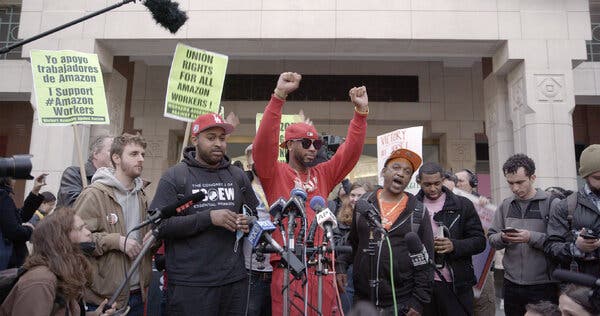
Union
Against all odds, the warehouse workers at Amazon’s JFK8 warehouse on Staten Island successfully got their union recognized by the NLRB, after years of grinding organizing and union busting goons. You won’t find Brett Story and Stephen Maing’s Sundance-winning documentary on Amazon Prime, and if Jeff Bezos gets his way, you won’t see it anywhere. The filmmakers are self-distributing, so seek it out.
Best Picture

Anora
Sean Baker’s masterpiece follows stripper and sometime prostitute Ani as she falls in love with one of her clients, the wastrel son of a Russian oligarch. But when they marry in Las Vegas, and his parents (and the Russian mafia of New York) get wind of it, the whole fantasy falls apart. Baker and Mikey Madison get my personal Best Director and Best Actor awards. Everything about Anora is perfect.

In the wake of the killing of Tyre Nichols by members of the Memphis Police Department’s SCORPION Unit in January 2023, the Department of Justice (DOJ) initiated an investigation of the MPD to determine if officers regularly violated citizens’ rights. After 18 months of reviewing case files and video, interviewing Memphians, riding along with officers, and observing the inner workings of the MPD, the DOJ released its findings on December 4th. The 70-page report concludes, “After an extensive investigation, the Department of Justice has reasonable cause to believe that the MPD and the city engage in a pattern or practice of conduct that deprives people of their rights under the Constitution and federal law.”
“Don’t Kill Me!”
The DOJ investigators highlighted four key findings: 1. MPD uses excessive force. 2. MPD conducts unlawful stops, searches, and arrests. 3. MPD unlawfully discriminates against Black people in its enforcement activities. 4. The city and MPD unlawfully discriminate in their response to people with behavioral health disabilities. To support these findings, investigators cited numerous instances of violence by MPD officers against the citizens of Memphis. “Excessive force is routine in MPD,” DOJ investigators write. “Officers use force as a first resort, demand unquestioning obedience, and exact punishment if they do not receive it.”
Nine police cars and 12 officers responded to a call where a mentally ill man stole a $2 soft drink from a convenience store. After he put his hands up to surrender, he was beaten. He screamed, “Don’t kill me!” and tried to run away. He was subdued and repeatedly tased while face-down on the ground, then served two days in jail for disorderly conduct and theft.
In another case, three officers tackled a man who had littered in a public park. “The man had done nothing wrong, but was ‘talking all this shit,’ according to one officer, and would not tell the officers his name. When the man dropped his drink while leaving the park, four officers surrounded him. … While handcuffed in the patrol car later, the man told a lieutenant that he was trying to follow the officers’ directions, but they had already decided to charge him: ‘I even offered to pick the can up.’”
The DOJ report finds fatal flaws in the MPD’s frontline strategy. “Memphis has relied on traffic stops to address violent crime. The police department has encouraged officers in specialized units, task forces, and patrol to prioritize street enforcement. Officers and community members have described this approach as ‘saturation,’ or flooding neighborhoods with traffic stops. This strategy involves frequent contact with the public and gives wide discretion to officers, which requires close supervision and clear rules to direct officers’ activity. But MPD does not ensure that officers conduct themselves in a lawful manner.”
In two instances cited in the report, officers followed drivers to their destinations and confronted them for traffic violations. One woman was standing on the porch of a relative’s house. After she didn’t produce ID and told the police they were “not welcome on the property,” officers cuffed her, roughed her up, and threatened to pepper spray her. The report states, “After locking her in a police car, one officer asked, ‘So what did we see her do?’ When an officer suggested the woman’s car had improperly tinted windows, another officer responded, ‘All this for a tint?’ The officer shook his head and gestured with his hand that the woman talked too much.”
In another incident, officers forced their way into the home of a woman accused of driving with expired tags and failing to stop at a stop sign. “No exigent circumstances demanded they enter the woman’s home, and the officers had no justification to use force to push their way inside for a nonviolent traffic infraction,” reads the report. After arresting the woman in front of her crying child, “… one officer reflected, ‘In the grand scheme of things, this does not seem like it was worth it.’”
Officers frequently use potentially deadly neck restraints, similar to the one Minneapolis Police Department members applied fatally to George Floyd when he was killed in 2020. In Memphis, an intoxicated man was repeatedly choked into submission until he urinated on himself. “He was not charged with any crime.”
After offering a ride home to a man suffering a mental health crisis, the police uncovered an outstanding warrant for theft. The officer pulled the man from the police car, saying, “You’re fixing to get your ass whupped.” When the man tried to flee, the officer beat him and put him in a neck restraint.
Officers were frequently observed beating, tasing, and pepper spraying people who were already restrained and posed no threat. “One officer hit a handcuffed man in the face and torso with a baton eight times.”
In addition, “Officers repeatedly permitted police dogs to bite or continue to bite people, including children, who were nonresistant and attempting to surrender.”
In one incident, an officer investigating a stolen vehicle report “fired at a car at least eight times at a fast food drive-thru in the middle of the day, jeopardizing other officers and bystanders. … MPD’s investigation improperly found that this use of deadly force was justified.”
In a sidebar titled “Sick of his fucking mouth,” the DOJ investigators write, “MPD officers escalate incidents involving minor offensives by responding to perceived insults, disrespect, or ‘verbal resistance’ with unconstitutional force. … Some MPD officers seem to believe that questioning their authority justifies force — as one supervisor told us, ‘If someone says, “I ain’t under arrest,” that’s resisting arrest right there.’”
Children were not spared the MPD’s methods. When one 16-year-old girl called police to report that she had been assaulted, she ended up in handcuffs. “After three hours, officers removed the handcuffs to reposition them. As she complained that her hands were hurt and swollen and tried to move her wrists, the officers grabbed her and pushed her face down onto the ground to handcuff her again. The girl was then arrested and charged with disorderly conduct.”
When officers were dispersing a crowd after a fight at a high school football game, one officer singled out a “relatively small-statured teen girl trying to leave the premises, yelling ‘Bye! Bye!’ at her. The officer’s taunts provoked the girl, who talked back. In response, the officer shoved the girl, yelling, ‘Get out this motherfuckin’ lot.’ The girl pushed back, and two other officers approached the girl from behind and threw her on the ground. The officers then lifted the girl in the air and slammed her face down into the pavement. The officer who started the altercation told her to ‘Get your dumb ass up,’ and called her a ‘stupid bitch’ as the girl was led away in handcuffs.”
When officers chased two Black boys, aged 15 and 16, who were suspected of a curfew violation, one officer, who had dropped his mobile phone in the chase, said, “I am fucking these little kids up, man. … I am fucking you all up. I just wanted to let y’all know that.”
In another incident, “One officer shot a teenager, and then another officer hit the teenager three times in the head with the butt of his handgun and at least 12 times with a closed fist. The teen was disarmed, seriously injured, and posed no threat at the time. Prosecutors later sent a letter to MPD stating that they ‘seriously considered recommending criminal charges’ against the officer because of the ‘more than one dozen closed fist punches to the face’ that the officer delivered. The prosecutors wrote, ‘We trust that you will handle this as an internal matter and leave it to your sound discretion.’ We saw no evidence that any further investigation took place or that any discipline was imposed. The officer remains employed at MPD.”
The report concludes, “Supervisors do not address these recurrent practices, and some at MPD defend these practices. As one field training officer told us, ‘We’re not excessive enough with these criminals. We baby them.’”
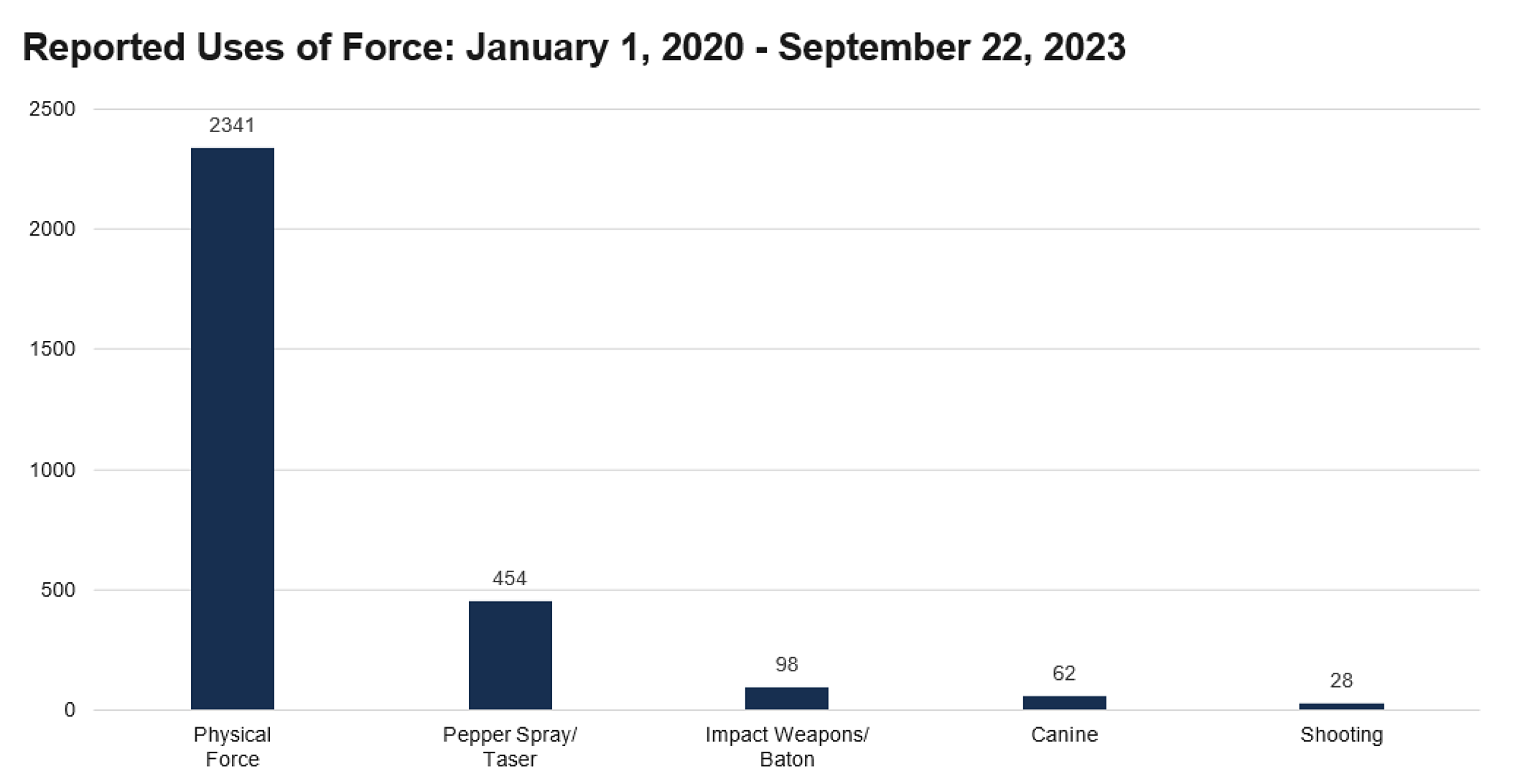
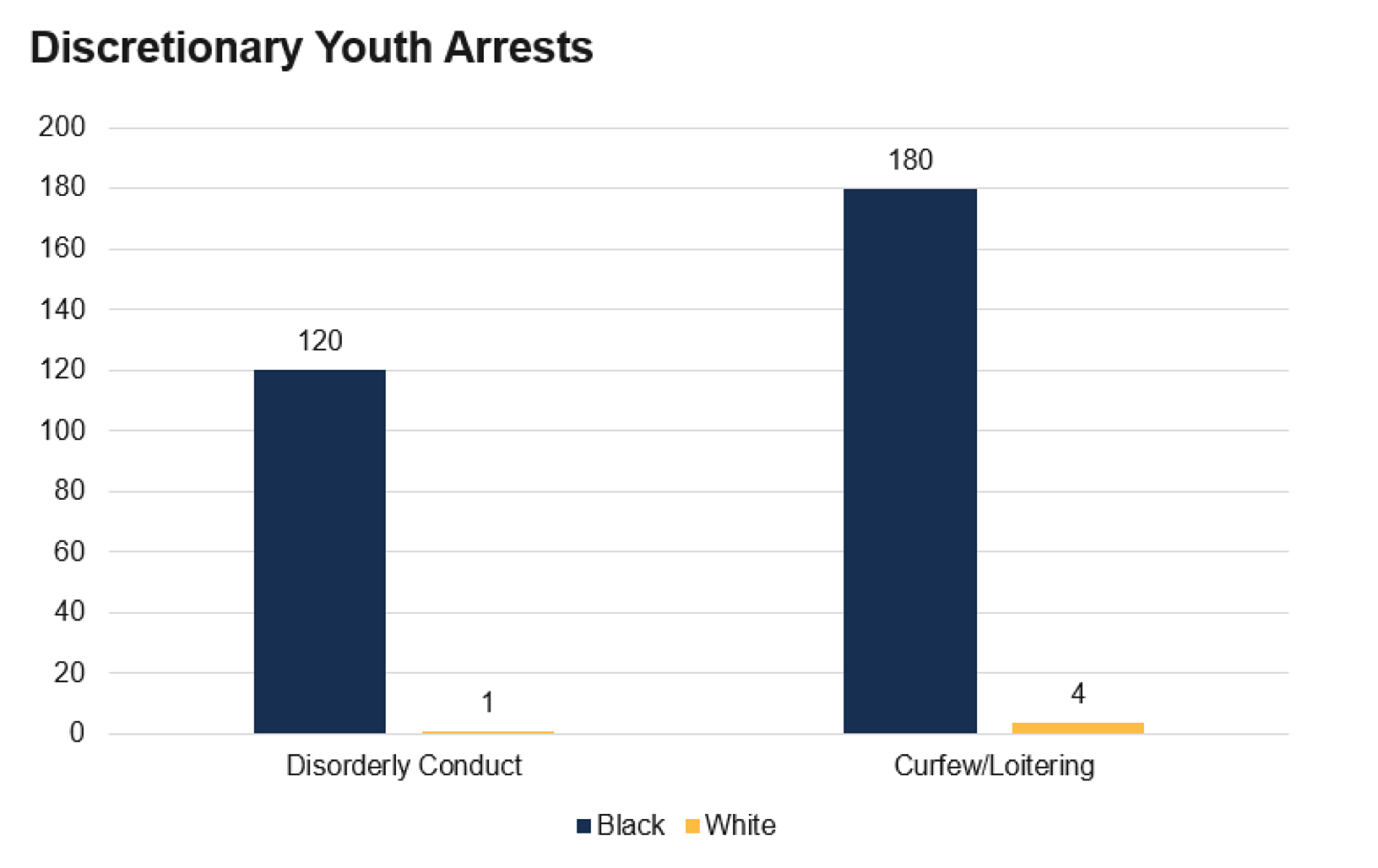
Black People Bear the Brunt
On page 37 of the report, DOJ investigators write, “MPD’s own data show that across a range of different law enforcement actions, MPD treats Black people more harshly than white people when they engage in similar conduct.”
While 64 percent of Memphians are Black, 81 percent of the MPD’s traffic violations are issued to Black people. Officers issued 33.2 percent more moving violations in predominately Black neighborhoods than they did in predominately white neighborhoods. Black drivers were cited for equipment violations at 4.5 times the rate of white drivers; for improperly tinted windows, the rate was 9.8 times. Public health data indicates that both Black and white people use cannabis at the same rate, but MPD arrested Black people for marijuana possession at more than five times the rate of white people.
The report found that the MPD stopped and cited one Black man 30 times in three years. In another case, “MPD stopped a Black man outside a dollar store ‘due to multiple robberies of dollar stores in the area,’ according to the police report. The officers had no reason to suspect that this particular man took part in the robberies, and the man told them he was just waiting for a friend. When he didn’t leave or produce ID, police handcuffed him, beat him with a baton, and pepper sprayed him. The officers had no reason to believe that the man engaged in criminal activity and lacked reasonable suspicion to stop him. But they arrested him anyway, and he spent a night in jail. Prosecutors declined to pursue any charges stemming from the incident. After the incident, the man noted, ‘They had no reason to do this. And they’re out here doing this to people every day.’”
Mental Health Crisis
In 1988, after the MPD killed a mentally ill man who was cutting himself, the city founded the Crisis Intervention Team (CIT). Composed of officers who have specialized training in dealing with behavioral health issues, the CIT became a model other city’s police departments emulated. But the DOJ found “serious problems with the CIT program,” and that “officers often escalate behavioral encounters and use combative tactics almost immediately after arriving to behavioral health calls. … We observed CIT officers in Memphis belittle and mock people with behavioral health disabilities. In one incident, a CIT officer hit a man in the head and threatened him with a Taser while officers called him a ‘motherfucker,’ ‘bitch,’ and a ‘dumbass.’” One CIT officer earned the nickname “Taser Face.”
One 8-year-old Black boy with four behavioral health diagnoses encountered the MPD nine times between December 2021 and August 2023. He was threatened with tasing, handcuffed, and repeatedly thrown onto a couch. In one incident, when the boy stuck out his tongue, the CIT officer responded by bending his arm back and screaming, “I can break your arm with the snap of my wrist.”
The report says that while 75 percent of 911 calls involving people with mental illness are nonviolent, “MPD’s training on behavioral health primes officers to approach people with behavioral health disabilities with force and aggression, and our review revealed they often do. For instance, a training given to all new officers erroneously teaches that people with bipolar disorder do not feel pain.”
The City Responds
At a press conference on December 5, 2024, Mayor Paul Young responded to the DOJ’s findings — while repeatedly emphasizing that he had not read the report. “I believe that even one incident of mistreatment by the police is one too many. … The report the DOJ released last night is going to be difficult to read. Some of the incidents the DOJ report described are simply not acceptable, and our hearts go out to every person who has been impacted by those actions.”
In cities such as Seattle, New Orleans, and Chicago which have previously been the subject of DOJ investigations, city governments entered into consent decrees, negotiated with the DOJ, that outline the steps police departments must take to improve. At the press conference, Young ruled out signing such a decree. “We believe adjustments we’ve already begun making must continue, and that they must expand. It’s my job as mayor to fight for the best interests of our entire community. Every member. After carefully considering the information we received from DOJ, we didn’t believe that entering into any agreement in principle or consent decree right now, before even thoroughly reading the DOJ report, would be in the best interest of our community. It’s crucial that the city has the time to do a thorough review and respond to the findings before agreeing to anything that could become a long-term financial burden to our residents, and could, in fact, actually slow down our ongoing efforts to continuously improve our police department.”
Young cited recent statistics which show a 13 percent drop in crime overall, and a 19 percent drop in violent crimes. Police Chief C.J. Davis echoed the mayor’s position that the department is on the right track. “In some of the areas that have been outlined in the report, we have made significant changes aligned with the Department of Justice, getting their support with some of the training that has been ongoing, not just this year, but in previous years.”
In response to the sections of the report regarding the MPD’s treatment of children, Davis said, “We spend a lot of time with our children in our community. We graduated over a thousand children from our D.A.R.E./G.R.E.A.T. program, and work consistently to try to improve those relationships. We’re going to look through the report to ensure that we’re not missing anything.”
Shelby County District Attorney Steve Mulroy has studied the full report. “I think it’s very concerning and shouldn’t be dismissed. I still think the vast majority of folks on the force are people of good faith. They have a hard job, having to make quick decisions in stressful, sometimes dangerous situations. But that doesn’t mean there can’t be systemic issues of culture, training, and supervision that cry out for reform.”
When Shahidah Jones of the Official Black Lives Matter Memphis Chapter read the report, she recalls thinking, “Not to be cynical, but it was just like, ‘Duh.’ We didn’t choose to target police because we didn’t have anything else to do or we were looking at these one-off instances. A very large part of organizing is for us to learn history and do our political study. … This is not something new. This is the way police have been taught to operate.”
Josh Spickler, executive director of criminal justice-reform nonprofit Just City, agrees. “I’m not particularly surprised by the report. I recognize some of these stories, some of the examples from media reports. Many of these things are well-documented and well-known incidents. And the findings are bad and awful, and as even Mayor Young said, hard to read, but they are not surprising.”
For Amber Sherman, who lobbied the city council for reform in the wake of the Tyre Nichols killing, the report felt like vindication. “My immediate action really was that it just corroborated everything that, you know, we as organizers here in Memphis have been saying for so long, especially with Decarcerate Memphis, where we’ve been really pressing the issue about pretextual stops and how dangerous they are.”
Decarcerate Memphis’ Alex Hensley, who drafted the reform ordinances which were passed by the city council in reduced forms after the Tyre Nichols killing, says she, too, feels vindicated by the report. “Activists and organizers have been saying all of these things for years on end, and then to have the DOJ — which is a policing entity, by the way — to say that, yeah, we need to not prioritize these low-level violations.”
DA Mulroy says, “We need to rethink about using specialized units for routine enforcement. And distinguish between traffic stops that actually affect safety or real crime, like moving violations and drive-out tag fraud violations, which make sense. But some of these minor equipment violations, the data shows the hit rate on those is very low — you’re talking like 2 to 3 percent of the time do you find weapons or drugs or somebody that’s wanted on a serious charge. But the data also show those are precisely the types of offenses that are associated with racial profiling. You really have to think about what kind of a bang you’re getting for your buck. You’re potentially alienating the community that you most want to cooperate with law enforcement because they’re the ones who see the crime.”
City council member Dr. Jeff Warren said he had not yet read the report. “If you remember, around the time that Black Lives Matter occurred after the George Floyd killing, the council began a process where we were involved with the police department, trying to initiate reforms. Some of the reforms that we actually initiated were negated by the state legislature. … I think we’ve been in the process of reform since this current police chief came on board; we’re doing that right now. That’s one of the reasons I don’t really think that the city needs to be entering into a consent decree that will cost taxpayers multiple millions of dollars, when it’s something we’re already trying to do.”
When asked about the DOJ’s finding that MPD recruits are taught that people with bipolar disorder cannot feel pain, Warren, a family physician, responded, “I don’t know where they got that from. Just because it’s written in a report doesn’t mean that’s the truth.”
The treatment of what the MPD calls “mental consumers” is one issue where there may be consensus on reform. The DOJ report cites multiple high-ranking MPD officers, as well as Memphis Fire Department officials and 911 call-takers, who believe that a new department specializing in mental health situations is needed to shift the burden from the MPD.
“We should listen to them on that,” says Hensley. “If this city is so pro-police, listen to them on this subject. Clearly, there are a lot of mental health calls and a lot of mental health issues within our community that I think tie back to these issues of poverty, lack of housing, lack of investments in basic necessities. We have to come up with something different.”
Spickler says, “There’s data that shows that most interactions with people in mental health crises are not violent. There are ways of responding that wouldn’t lead you to have to tell people falsely that people with bipolar don’t feel pain. One of the great suggestions of this report is that we don’t have to send an armed person to some of the things that we send them to, like a stranded motorist, traffic accidents, and mental health calls. These are all things that can be handled with someone who has safety and resolution as their mission and not what we have in this police department — and most police departments, frankly — and that is a warrior mentality. There’s an arrogance to it, and there’s an offensiveness to it.
“There’s nothing about policing that should be offensive. It’s ‘to protect and serve,’ right? Many police departments across America have tried to shift to a guardian model, which is how policing, I think, is most effective. But throughout that report, you see very clear evidence that that is not the case at the Memphis Police Department. There is no guardian mentality. It’s not taught; it’s not modeled. It’s really not expected. What is expected is that you get what you want by whatever means necessary.”
Will Anything Change?
The election of Donald Trump, who has promised a “brutal approach” to law enforcement, has brought the next steps into question. Whether a future DOJ would sue to impose a settlement with the city is an open question.
“I’m not gonna speculate about their motivations, but I think it’s obvious to anybody that there’s a very good chance that a lot of this will be dropped or, at a minimum, they’ll be less aggressive about enforcing it with the new administration,” says DA Mulroy. “We’ve seen that before with the prior Trump administration. That could be anyone’s calculus in dealing with the aftermath of November 5th.”
At his press conference, Mayor Young said, “We would have the same position regardless of the outcome of the presidential election.”
A consent decree with the DOJ would result in federal monitors being assigned to the MPD in order to ensure that they do not violate citizens’ constitutional rights. In his regular Friday email on December 6th, Young wrote, “Instead of a broad and potentially prolonged federal oversight via a consent decree — which could impose millions in costs on our residents — we believe by taking a holistic, community-focused approach we can move further and faster toward the change we need with less cost to our community.”
These costs must be weighed against the costs of not acting, says Hensley. “I think they’re going to pay for it one way or another. First of all, they’re bloating the costs. We’ve looked at other cities, some of them have been high, but it’s spread out over time. There are just all these other elements that are being left out to make it seem like we’re going to go bankrupt next year. That’s disingenuous. Tyre Nichols’ family is suing them for $500 million — and that’s just one person. I’m not their chief financial officer, but you can look at that clearly and see the costs are going to be far worse if they don’t sign the consent decree, or if they don’t do these reforms.”

Before Peter Jackson convinced New Line Cinema to back his Lord of the Rings movie trilogy in 1999, lots of people had tried to adapt J.R.R. Tolkien’s fantasy epic. Stanley Kubrick though about it, and decided it was unfilmable. John Boorman tried in the 1970s, but when he got bogged down, he sold his screenplay to an unlikely entity. Animator Ralph Bakshi is, today, a legend. In the mid-’70s, he was the guy who made Fritz the Cat, a gleefully obscene animated film based on the work of counterculture cartoonist R. Crumb, notorious for being the first animated film to ever receive an X rating.
Bakshi’s Lord of the Rings was sorely undercapitalized, so he was forced to innovate. He drew over test footage of people in costumes, a time-saving technique known as “rotoscoping,” and slyly mixed live-action with animation. As with all of Bakshi’s nine feature films, the results are a mixed bag. There are moments of brilliance, and moments of “WTF was he thinking?” Bakshi’s film was a financial success, but even though it ended with the siege of Helm’s Deep, his studio never greenlit the promised sequel, which would have taken the Hobbits to Mordor.
After the Best Picture triumph of Return of the King, Jackson produced three Hobbit movies that were of, let’s say, declining quality. Noted Tolkienista Jeff Bezos paid $750 million for the The Rings of Power TV series on Amazon Prime, which has been dodgy, at best, and a crushing bore at worst.
Now New Line, in a bid to retain the rights to Tolkien’s works, has gone back to LOTR’s cinematic roots and produced an animated film. Produced and co-written by Philippa Boyens, who was one of Jackson’s main creative collaborators, The Lord of the Rings: The War of the Rohirrim is directed by Kenji Kamiyama, an acclaimed anime artist whose credits include the groundbreaking cyberpunk series Ghost in the Shell: Stand Alone Complex.

The War of the Rohirrim is based on a tidbit of Middle Earth history mentioned in one of Tolkien’s exhaustive appendices. It’s a couple of centuries before Bilbo Baggins discovers the One Ring, and the no-nonsense King Helm Hammerhands (voiced by Brian Cox) rules the kingdom of Rohan. His daughter Héra (Gaia Wise) is not content to be a beautiful princess tucked away in a castle. Raised by her martial father and two brothers, while her mother died in childbirth, she learned to ride a horse before she could walk and is as handy with a short sword as any Rider of Rohan.
But, as you would expect, it’s an uphill battle for a woman to get respect in a feudalistic, patriarchal society. Overshadowed by her brothers Hama (Yazdan Qafouri) and Haleth (Benjamin Wainwright), she’s so out of the loop that when rival horse lord Freca (Shaun Dooley) shows up, demanding an answer to his son Wulf’s (Luke Pasqualino) proposition for a dynastic marriage, it’s all news to her. Her father wants her to marry a Gondorian, thus cementing the loyalty of a powerful ally. But Héra’s ambition is to resurrect the tradition of the Shield Maidens, a group of female warriors who took up arms to save Rohan when the riders were decimated in battle.
When Freca won’t take “no” for an answer, and gets uppity with the King, Helm says he won’t abide fighting in the mead hall, and suggests they take it outside. Freca proves no match for the guy they call “Hammerhands” and dies after only one punch. The king immediately regrets his rage, but feels he has to exile Wulf as a precaution.

Years later, Wulf returns at the head of an army of Dunlending wild men to claim the throne of Rohan, and the king must fight through betrayal in his own ranks and a long, cold winter of pitched battles to save his throne. When Hama and Haleth fall on the field of battle, it’s up to Héra to save her country and secure her family’s legacy.
Kamiyama is a product of the Japanese anime machine, but like Bakshi’s LOTR, this transcontinental production is hodgepodge of techniques and styles from the entire world of animation. Héra, with big eyes, flowing gowns, and flashing swords, is as much Sailor Moon as she is Tolkien. Modern digital tools open up possibilities Bakshi never had, and the line between animation and heavily processed video blurs. In places, Kamiyama appears to be deliberately aping Bakshi’s rotoscoping style. While this is clearly Peter Jackson’s version of Middle Earth, with familiar sets like Helm’s Deep and Isengard, Kamiyama avoids Jackson’ addiction to slo mo, while delivering the big set piece battles the series is famous for.
The writing, however, is bit of mixed bag. I appreciated the lack of heavy sorcery, and the choice to focus on a human story of jealousy and ambition gone wrong. But The War of the Rohirrim never feels more important than a footnote to the Lord of the Rings story, which is exactly what it is. But hey, at least it’s more entertaining than those Hobbit movies.

Eighty members of the Southeastern Film Critic’s Association have voted Anora as the best film of 2024. The organization polls its members, including this columnist, annually to determine the 10 best films of the year, and award outstanding acting performances, as well as awards for writing and directing.
It was a contentious year for the critics.The closest category in this year’s balloting was for Best Documentary. With only two ballots left to be tabulated, the category was a three-way tie between Will & Harper, Sugarcane, and Super/Man the Christopher Reeve Story. When the final two votes were added, Sugarcane, an investigation into the Canadian Indian residential school system by directors Julian Brave, NoiseCat, and Emily Cassie, took the crown.
Another close result resulted in Jane Schoenbrun’s I Saw The TV Glow just missing the top 10. The acclaimed A24 film about a TV show’s increasingly creepy fandom was narrowly edged out by James Mangold’s Bob Dylan biopic, A Complete Unknown, which hits theaters on Christmas Day.
“Every year we hear from the naysaying sectors of the industry that it wasn’t a very good year for film,” says Scott Phillips, President of SEFCA and writer for Forbes.com. “This slate of winners easily disproves that statement for 2024.
“Between theatrical distribution and streaming, releases can be a bit scattered and hard to find, but if you take the time to find the better films of 2024, they form a potent lineup. We hope that film fans out there can use our Top 10 list to catch up on some of the best that 2024 had to offer.”
Look for my Best of 2024 in next week’s issue of the Memphis Flyer. Meanwhile, here are the complete results of the SEFCA’s poll.
SEFCA’s Top 10 Films of 2024
Best Actor
Winner: Adrian Brody, The Brutalist
Runner-Up: Colman Domingo, Sing Sing
Best Actress
Winner: Mikey Madison, Anora
Runner-Up: Demi Moore, The Substance
Best Supporting Actor
Winner: Guy Pearce, The Brutalist
Runner-Up: Kieran Culkin, A Real Pain
Best Supporting Actress:
Winner: Ariana Grande, Wicked
Runner-up: Zoe Saldana, Emilia Perez
Best Ensemble
Winner: Conclave
Runner-Up: Sing Sing
Best Director
Winner: Brady Corbet, The Brutalist
Runner-Up: Sean Baker, Anora
Best Original Screenplay
Winner: Sean Baker, Anora
Runner-Up: Brady Corbet and Mona Fastvold, The Brutalist
Best Adapted Screenplay
Winner: Peter Straughan, Conclave
Runner-Up: RaMell Ross and Joslyn Barnes, Nickel Boys
Best Documentary
Winner: Sugarcane
Runner-Up: Super/Man: The Christopher Reeve Story
Best Animated Film
Winner: The Wild Robot
Runner-Up: Flow
Best Foreign Language Film
Winner: Emilia Perez
Runner-Up: The Seed of the Sacred Fig
Best Cinematography
Winner: Grieg Fraser, Dune Part 2
Runner-Up: Jarin Blaschke, Nosferatu
Best Score
Winner: Trent Reznor and Atticus Ross, Challengers
Runner-Up: Daniel Blumberg, The Brutalist